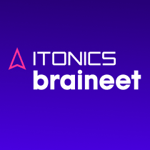In our monthly innovation updates, we provide you with an overview of the most relevant insights, best practices & tools from the innovation cosmos.
Topics in December
1. Prepared for 2022: Setting the right Innovation KPIs
Have you already defined your innovation strategy for the upcoming year? If so, you probably have also considered certain innovation metrics that steer your innovation activities towards your objectives for 2022. It can be distinguished between two types of innovation metrics: vanity or action. Vanity metrics commonly measure things like:
- Profitability
- Generated ideas
- Number of patents
- Return on investment (ROI)
- Research & development (R&D) spending
These metrics are popular; however, they are not necessarily beneficial as they focus on current impacts while neglecting possibilities in the future. Vanity metrics provide only an overview of the status quo of innovation activities and lack concrete next steps to act upon. Therefore, the more effective way is to focus on the second category of innovation metrics, which are more actionable, informative, and measurable.
So-called actionable metrics can lead to informed business decisions and subsequent actions. Associated KPIs are characterized as:
- Relative (input/output) and time-bound
- Related to specific goals and having a motivation
- Revealing possible directions for change
Compared to vanity metrics, actionable metrics provide concrete indications of whether innovation activities are moving in the right direction, changes are needed, and value is being delivered. A well-elaborated system of actionable KPIs is the single solid base to control innovation activities and justify investments in innovation.
The four categories of innovation metrics you should consider are:
1. Innovation Strategy
These metrics include strategy and positioning targets. KPIs are set to measure the progress toward achieving a future competitive advantage. They help manage strategic capabilities and operationalize your goals, action fields, and future markets.
2. Innovation Organization
These metrics guide your organization and governance. They measure the progress in aligning people and processes to your innovation objectives in order to help manage the coordination process.
3. Innovation Culture
With culture metrics, you can measure the progress in engaging your innovation community. The KPIs ensure a high engagement level of stakeholders inside and outside your organization and thus help manage performance.
4. Innovation Operation
These metrics allow you to control your operations. The KPIs are used to measure the progress in the execution of innovation projects. Thus, they help you with the individual steps of the implementation process.
For more detailed insights on prolific KPIs you should employ to steer your innovation activities throughout the year successfully, read on here: How to Steer Innovation Activities Using KPIs
2. A Blueprint for Systematic Innovation Management
Many companies would consider themselves as innovative or at least strive to be. However, it can be challenging to build and sustain innovation successfully within an organization, especially as the business grows. Regularly assessing your innovation maturity and considering the right innovation KPIs - as highlighted above - helps you set the right focus and optimize your innovation management.
Recently, Roman Šiser, Innovation Manager at Škoda Auto, was a guest on the Innovation Rockstars Podcast and talked about how they established a blueprint for systematic innovation management. The innovation blueprint is a framework that serves as a basis for improving innovation maturity and proficiency. This framework consists of four components: strategy, governance, process and tools as well as mindset and culture. With a so-called innovation mindset index, Škoda assesses how it is performing on each of the four components and thus can understand where there is still room for improvement in order to reach the next maturity level. Moreover, it helps to benchmark with others to see where they need to catch up.
Listen to the whole episode on Spotify or Apple Podcast or watch the video podcast.
In the interview, the importance of culture and mindset was particularly emphasized for driving innovation activities successfully. Roman pointed out that everyone in the organization is responsible for fostering an innovation culture:
You need everyone to be on board and understand what innovation is about and that they are part of that culture.
To understand how far the sense of innovation culture is developed in each department, they use the innovation mindset index. Based on the status quo, the managers and employees of each department discuss together how the innovation culture within the team can be nurtured and further evolved.
When asking Roman about the measures or activities that had the most impact on advancing Škoda’s innovation maturity in the last years, he first emphasized that an important prerequisite is to have a certain budget and tools that can be used to try things out. From that, his team started a proof of concept (POC) program that he considers the biggest lever. It helped them stimulate ideas from experts, innovators, and different departments and provided them with support and resources to validate the ideas and increase the chances of implementation.
Do you know your innovation maturity? Try the ITONICS Innovation Maturity Assessment! It only takes 10 minutes of your time, and it is free.
Measure your Organization's Innovation Maturity!
Gain transparency about your current innovation management capabilities and get suggestions for improvement straight away.
3. Our Tech of the Month: Carbon Capture and Storage
Carbon Capture and Storage (CCS) is a technology that is considered a temporary solution to help reduce carbon emissions and convert carbon for other uses.
CCS refers to the practice of capturing CO2 emissions from different sources and storing or reusing those emissions to prevent them from entering the atmosphere. High-emissions sectors like cement plants, iron, steel, and chemical manufacturing factories can use CCS to transition to more sustainable industries. The technology also has applications in the production of blue carbon, alternative synthetic fuels, and commercial products such as plastics, concrete, and reactants for chemical synthesis.
Proponents assert that CCS can help bridge the gap until next-generation zero- or negative-carbon energy technologies emerge. However, it remains a divisive issue due to concerns that CCS, as an end-of-pipe solution, could prolong fossil fuel usage rather than drive cleaner production and full decarbonization. The technology is also expensive and water-intensive.
The fact remains that the world must reduce emissions to avoid the worst and possibly irreversible impacts of climate change. And technologies like CCS hold significant potential in helping the world transition from today’s “business as usual” to a more sustainable future.
US-based startup Noya retrofits cooling towers on buildings to pull CO2 from the atmosphere. It makes use of the existing infrastructure, combined with a non-toxic CO2-absorbing chemical blend and installation of downstream CO2 processing equipment. Noya then sells the captured CO2, sharing the profits with the cooling tower owners to help offset operational costs.
Tanker shipping company Stena Bulk has partnered with the Oil and Gas Climate Initiative (OGCI) to investigate the potential of onboard CCS technology. Results from the study show that CCS systems would be effective and technically feasible on large tanker ships. If implemented, this could prove to be a key step in decarbonizing the maritime sector.
To view more technologies and inspirations for the energy industry, explore the ITONICS Energy Technology Radar.
Discover game-changing technologies also for your industry with our
industry-specific technology reports - more industries to come in 2022!
4. Fact of the Month: The Best Inventions of 2021
Another challenging year marked by the pandemic is behind us. Nevertheless, many companies have found opportunities in change. The TIME recently published its annual list of 100 groundbreaking inventions changing how we live. We have picked our Top 5 highlighted below:
1. VR Gets Real - NVIDIA Omniverse
NVIDIA Omniverse™ helps create ultra-realistic virtual spaces for real-world purposes, like planning roads and buildings. It combines the real-time ray tracing technology from NVIDIA's latest graphics processing units (GPUs) and a suite of open-source tools to enable live collaboration in photorealistic 3D worlds. For example, the technology was used by BMW to build a digital twin of one of its factories and test more efficient assembly-line possibilities.
2. Self-Driving Delivery - Nuro R2
Nuro, a company based in San Francisco, developed an electric autonomous vehicle for last-mile deliveries to replace trucks and save time and resources. The “R2” has the size of a golf cart and has a speed maximum of about 25 m.p.h. R2 is already tested by Domino’s, FedEx, and Kroger.
3. The Carbon Cutter - Watershed
Watershed helps companies to reduce their carbon footprints. The areas with the highest emissions can be identified and shown in software by collecting data from their clients on all areas that cause emissions, like supply chains, electricity usage, and even commuting patterns of employees. Based on these insights, Watershed’s climate-strategy team helps to develop a footprint-reduction strategy. One of their clients, for example, is Shopify.
4. Wireless In-Road Charging - ElectReon
Although sales of electric vehicles (EV) increased by 160% worldwide in the first half of 2021, they still face one major issue: the range. The Israeli company ElectReon came up with an idea to charge EVs while driving. Similar to wireless chargers for phones, ElectReon is developing an in-road inductive charging system that uses electrical fields generated by coils under the asphalt to power the vehicles. Tests are already conducted in Germany, Italy, and Sweden.
5. Early Detection for Cognitive Decline - Linus Health DCTclock
Dementia is an increasingly widespread disease that is still thought to be underdiagnosed. Linus evolved the longstanding test to detect dementia in which patients draw the face of a clock with a pen and paper by using a digitizing pen. By doing this, hundreds of subtler details can be captured that clinicians would not have seen otherwise.
5. Your Daily Dose of Innovation
Enrich yourself with new input and inspiration over the holidays! We have some book recommendations for you:
 |
|
 |
|
🎄 In our last Innovation Update in 2021 we want to take the chance to say Thank You for being part of our innovation community!
We look forward to an exciting new year and keeping you up to date with the most interesting and inspiring insights on innovation. Merry Christmas and Happy Holidays!
Your ITONICS Innovation Team











